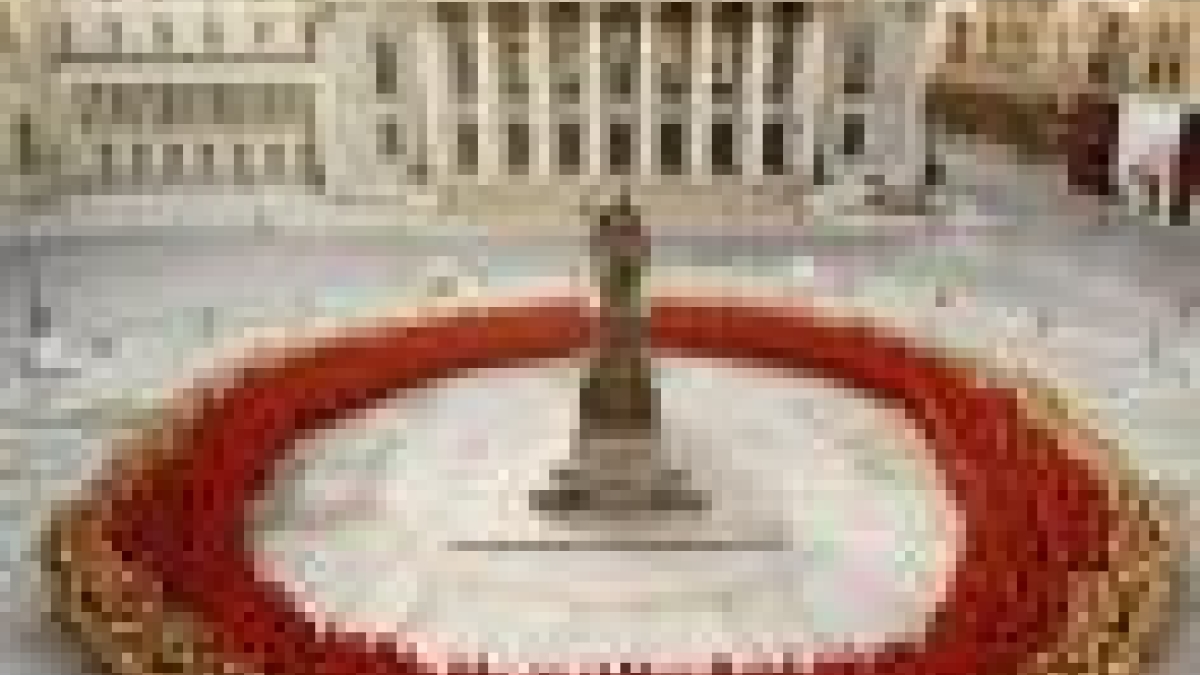ASU Art Museum presents a retrospective of photographs by Spencer Tunick from the collection of participant Stéphane Janssen

Spencer Tunick, "Munich 3 (Bayerische Staatsoper)," 2011. Image courtesy of the artist and Stéphane Janssen.
Photo courtesy of Herberger Institute for Design and the Arts
On Jan. 14, 2016, the Arizona State University Art Museum opens the exhibition "Participant: Photographs by Spencer Tunick from the Stéphane Janssen Collection," which includes more than 20 photographs by Spencer Tunick from 1997 to 2013 drawn from the collection of Stéphane Janssen. Tunick will give a gallery talk Wednesday, Jan. 13, at 1:30p.m., and both Tunick and Janssen will attend the exhibition opening Thursday, Jan. 14, from 5–7 p.m.
Since the early 1990s, Tunick has traveled the globe to create staged images of multiple nude figures in public settings. And since 2000, collector Stéphane Janssen has been a participant in Tunick’s photographs, which have ranged from a handful of figures in an art museum to thousands of volunteers in the Dead Sea in Israel.
Janssen, who is now 80, posed for the first time on a street in Harlem, New York, with 25 other people. Most recently, Janssen was one of 1,000 people covered from head to toe in dramatic red and gold body paint in front of the opera house in Munich, Germany, a project commissioned to coincide with the presentation of Richard Wagner’s operas "Der Ring Des Nibelungen," also known as the Ring Cycle.
All of Tunick’s participants are volunteers who respond to an open call to appear at a time and place. They are carefully arranged and then photographed by the artist. The gathered human bodies sometimes recede, sometimes dominate the built and natural backdrops. They meld into a unified composition of abstract patterns and challenge conceptions of nudity, privacy and the ideal body.
These human installations combine elements of performance art, sculpture, land art and photography. They also reference street art and flash mobs, which bring temporary art and experiences into the public space, expanding the reach and impact of the work. Tunick's art practice explores the social, political and legal issues surrounding art in the public sphere.
The exhibition, which closes May 28, 2016, and the accompanying artist’s book are generously supported by Stéphane Janssen. The book is available in the Museum Store or from nakedpavementbooks.com .
###
ABOUT THE ASU ART MUSEUM
The ASU Art Museum, named “the single most impressive venue for contemporary art in Arizona” by Art in America magazine, is part of the Herberger Institute for Design and the Arts at Arizona State University.
To learn more about the museum, call 480.965.2787, or visit asuartmuseum.asu.edu.
Location/Parking: The museum has three locations across the metro Phoenix area: the ASU Art Museum at 10th Street and Mill Avenue, on ASU’s Tempe campus; the ASU Art Museum Brickyard at 7th Street and Mill Avenue, in downtown Tempe; and the ASU Art Museum International Artist Residency Program Project Space at Combine Studios, in downtown Phoenix. Designated parking is available at all three locations.
Admission:Hours: The ASU Art Museum and ASU Art Museum Brickyard are open 11 a.m. – 8 p.m. on Tuesdays (during the academic year), 11 a.m. – 5 p.m. Wednesday through Saturday. The museum is closed on Sundays and Mondays. The ASU Art Museum International Artist Residency Program Project Space in downtown Phoenix at Combine Studios is open by appointment.
Media Contact:
Deborah Sussman Susser
480.965.0478
deborah.susser@asu.edu